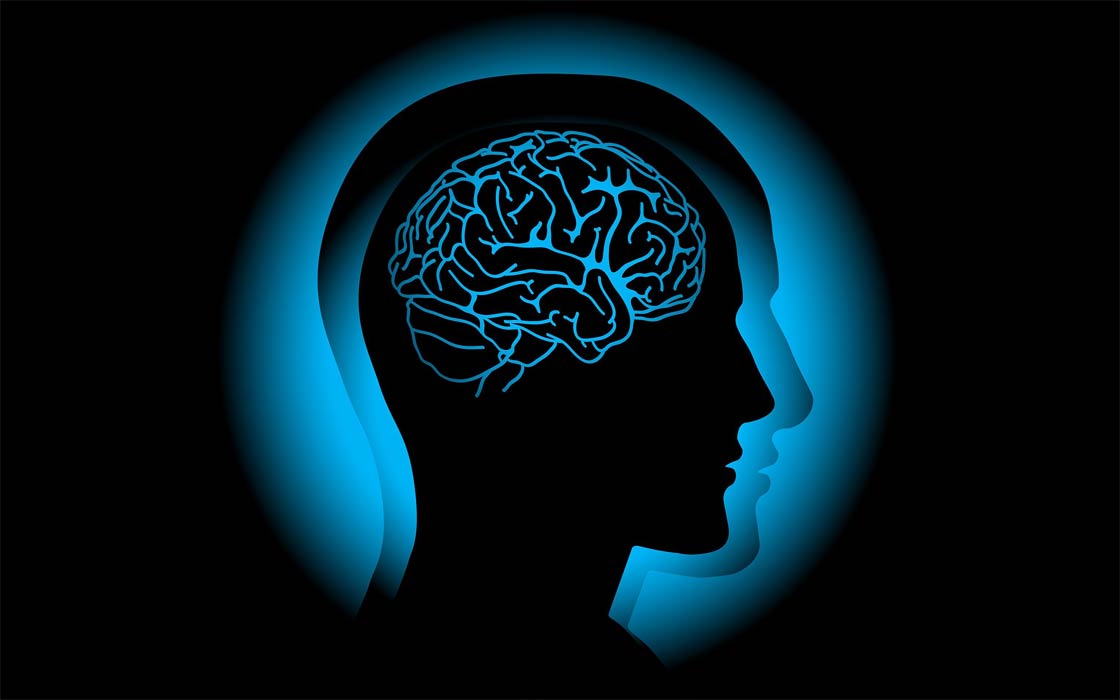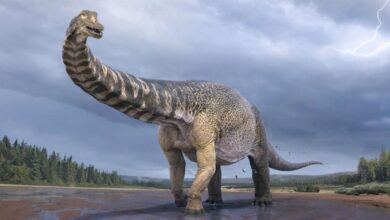Human Brain Development and Evolution
The evolution of the human brain is one of the most complex topics in the life sciences. The development of the human brain forms the foundation upon which our ability to think abstractly, solve problems, communicate, and create advanced technologies and culture is based. Research on brain evolution provides us with crucial information about how humans developed the unique cognitive abilities that distinguish us from other species.
Significance of the Brain in Human Evolution
The brain is the central organ of the nervous system, responsible for controlling and coordinating most vital functions. It is also the source of our consciousness, emotions, memory, and intelligence. During evolution, the size and complexity of the human brain increased significantly, which had a direct impact on our survival and adaptation abilities.
Brain evolution was a multi-stage process, involving both anatomical and functional changes, as well as adaptations related to various environmental and social challenges.
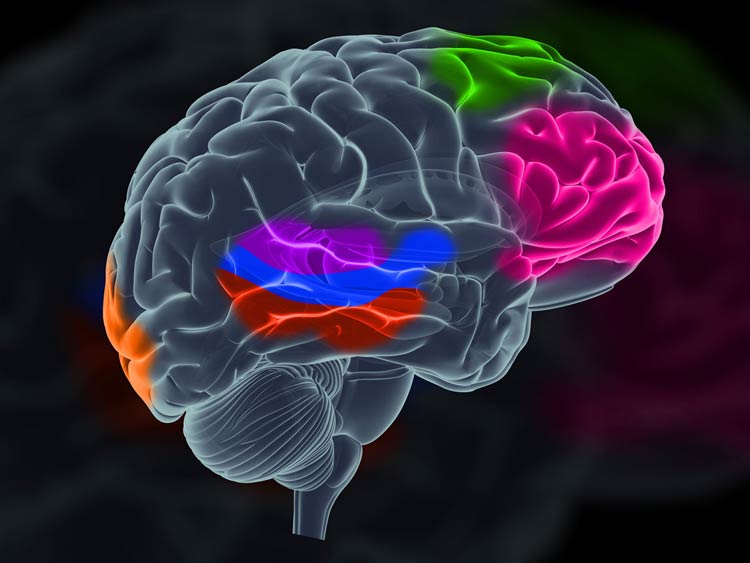
Origin and Ancestors of Humans
To understand the evolution of the brain, it is necessary to trace the development of our ancestors. The earliest hominids, which diverged from the line of apes, had relatively small brains. Over time, through various stages of evolution, we observe a significant increase in brain size, starting from australopithecines, through Homo habilis and Homo erectus, to Neanderthals and finally Homo sapiens. Each of these stages brought new adaptations that increased survival abilities and enabled the development of more complex social and cultural forms.
Early Stage: Hominid Ancestors
The first hominids, such as australopithecines, which lived about 4 million years ago, had relatively small brains, with a volume of about 400-500 cm³ (24.4-30.5 in³). Although their brains were larger than those of modern apes, they were significantly smaller than the brains of modern humans.
Homo habilis and Homo erectus
About 2 million years ago, with the appearance of Homo habilis, a significant enlargement of the brain began to be observed. Homo habilis had a brain volume of about 600-700 cm³ (36.6-42.7 in³). Later, Homo erectus, which appeared about 1.9 million years ago, had a brain volume ranging from 850 to 1100 cm³ (51.9-67.1 in³). This increase in brain size went hand in hand with the development of more advanced tools and social skills.
Homo neanderthalensis
Neanderthals (Homo neanderthalensis), who lived in Europe and Asia until about 40,000 years ago, had brains with an average volume of 1500 cm³ (91.5 in³), therefore even larger than the brains of modern humans, which have an average volume of about 1350 cm³ (82.4 in³). Despite the large brain volume, the structure and functionality of Neanderthal brains may have differed from those of Homo sapiens.
Homo sapiens
Modern humans (Homo sapiens), who appeared about 300,000 years ago, possess brains with a volume of about 1300-1400 cm³ (79.3-85.4 in³). The development of the Homo sapiens brain is associated with the emergence of advanced forms of communication, art, religion, and technology.
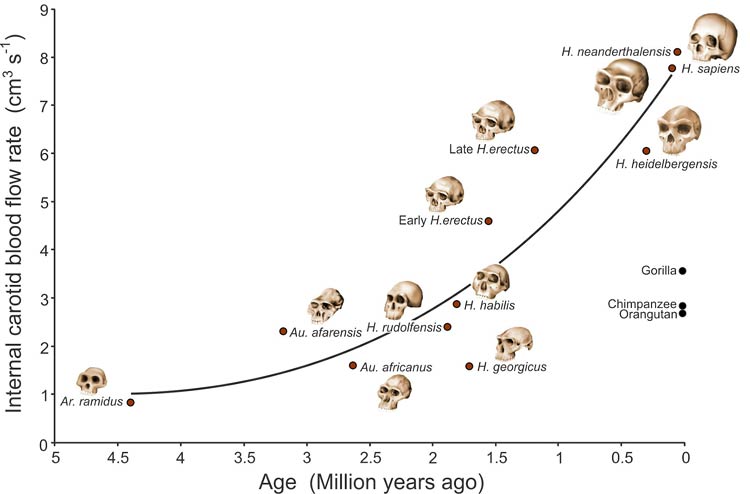
Neurological Adaptations
The increase in brain size in humans was not the only adaptation. Significant changes also occurred in the structure and organization of the brain:
- Prefrontal cortex: Highly developed in Homo sapiens, responsible for planning, abstract thinking, and impulse control.
- Broca’s and Wernicke’s areas: Crucial for the development of speech and language.
- Increase in the number of neurons: Especially in the neocortex, which is responsible for advanced cognitive functions.
Factors Influencing Brain Development
The development of the human brain was driven by many factors:
- Complex social environment: Required advanced communication and cooperation skills.
- Climate change: Forced behavioral and technological adaptations.
- Diet: Rich in protein and animal fats, which could have influenced the development of a larger brain.
The evolution of the human brain is an ongoing process, and its study provides important information about how our cognitive abilities evolved and how they may continue to develop in the future.
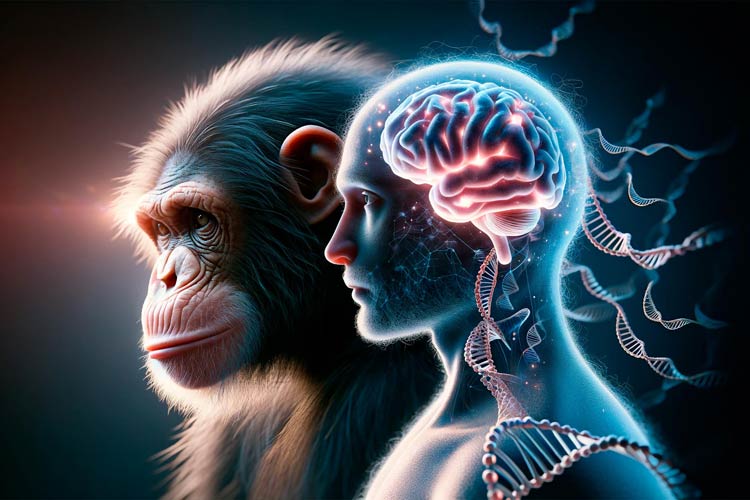
Brain Development and Social and Technological Adaptations
The increase in brain size and complexity did not occur in isolation but was closely related to the development of social skills such as communication, cooperation, and conflict resolution. Furthermore, climatic and environmental changes forced behavioral adaptations, which in turn influenced the development of tools and technologies. The evolution of the brain was therefore driven by both biological and cultural factors, leading to the emergence of the remarkably complex and plastic organ that is the human brain.
Impact of Diet on Brain Development
One of the key factors influencing brain evolution was the change in our ancestors’ diet. The introduction of meat and fish into the diet provided essential nutrients, such as proteins and omega-3 fatty acids, which are essential for brain development. This enabled the increase in brain volume and functionality, which had a direct impact on the cognitive abilities of our ancestors.
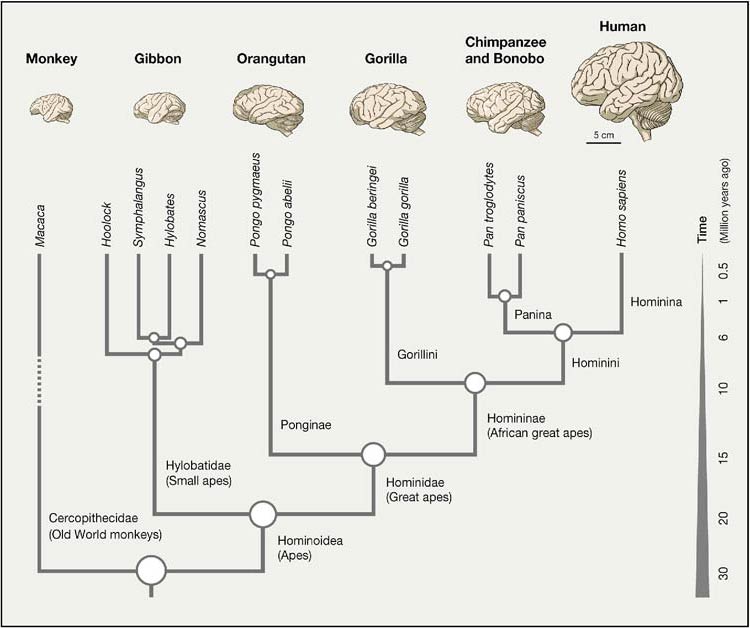
Theories on the Evolution of the Human Brain
The evolution of the human brain is a widely studied and analyzed topic in biological and anthropological sciences. There are several main theories that attempt to explain why and how the human brain evolved to its current state.
Theory of Social Intelligence
The theory of social intelligence suggests that the development of the human brain was driven by the need to cope with complex social structures. In the societies of Homo sapiens ancestors, individuals had to establish and maintain relationships, resolve conflicts, and cooperate, which required advanced cognitive skills. A larger brain facilitated better communication, understanding the intentions of others, and predicting their behaviors. This theory emphasizes the importance of language and communication as key factors in brain evolution.
Theory of Ecological Intelligence
The theory of ecological intelligence focuses on the role of the natural environment in shaping the brain. Human ancestors had to cope with a variety of ecological challenges, such as hunting, gathering, and avoiding predators. The complex environment required advanced cognitive skills, such as spatial memory, problem-solving ability, and innovation in the use of tools. This theory emphasizes brain adaptations related to processing spatial information and planning actions.
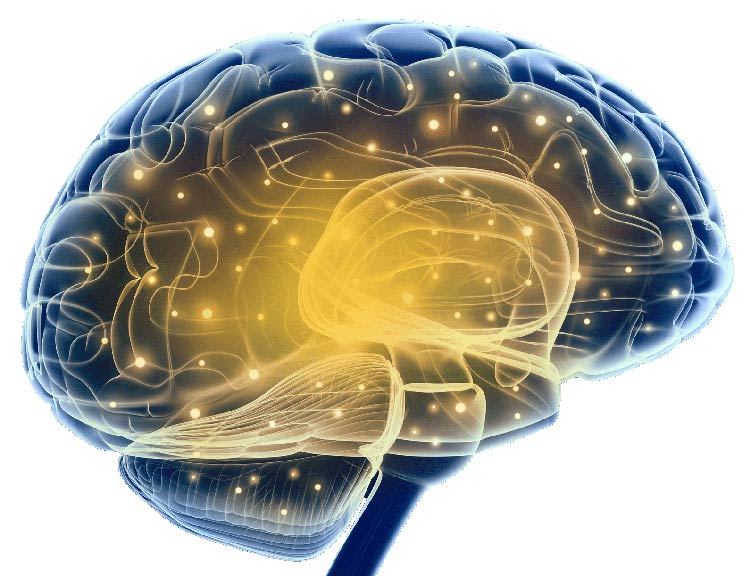
Expensive Tissue Hypothesis
The expensive tissue hypothesis posits that the development of a larger brain was associated with high metabolic costs. The brain is a very energy-intensive organ, consuming about 20% of the body’s total energy, even though it constitutes only about 2% of its mass. To meet these demands, human ancestors had to acquire food with high energy value, such as meat and animal fats. Therefore, this theory suggests that dietary changes were a key factor enabling the development of a larger and more complex brain.
Theory of Complex Social Life
The theory of complex social life suggests that brain development was driven by the needs associated with living in large social groups. In such groups, individuals had to cope with numerous social interactions, manage alliances and rivalries, and make decisions based on complex social relationships. The increase in brain size enabled better processing of social and emotional information, which was essential for effective functioning in large groups.
Theory of Language and Communication
The theory of language and communication posits that the development of advanced language was a key factor driving brain evolution. Language enables not only the transmission of information but also the expression of abstract thoughts, the planning of future actions, and the sharing of knowledge. The evolution of brain areas associated with language processing, such as Broca’s area and Wernicke’s area, was crucial for the development of Homo sapiens’ communication skills.
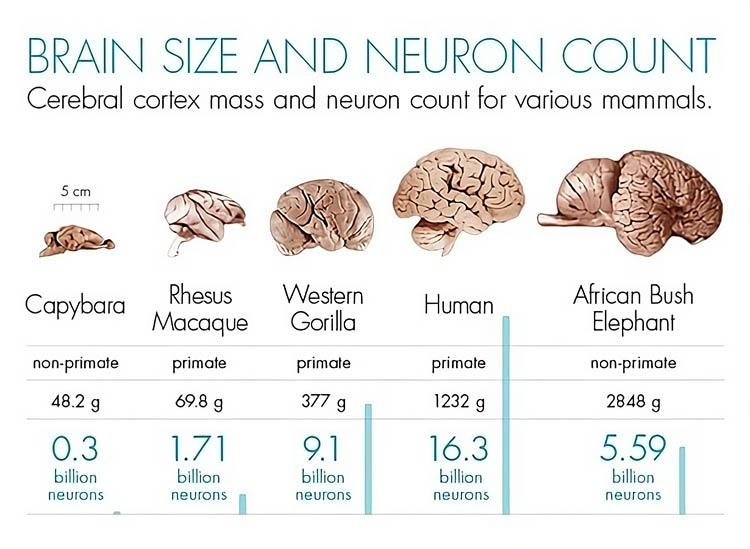
Conclusions
Each of these theories provides unique insights into how various factors may have influenced the evolution of the human brain. The development of the human brain was the result of a complex interaction of many factors, including social, ecological, metabolic, and communication pressures. Analyzing these theories helps us better understand how our brain became such a complex and powerful adaptive tool, enabling the development of advanced cultures and technologies.
Summary
The evolution of the human brain is the result of a complex process in which anatomical and functional changes were driven by a variety of environmental, social, and dietary factors. Research on this process allows us to understand how our cognitive abilities developed and what challenges shaped us as a species. Thanks to this, we can better understand our past and predict future directions of human development.

